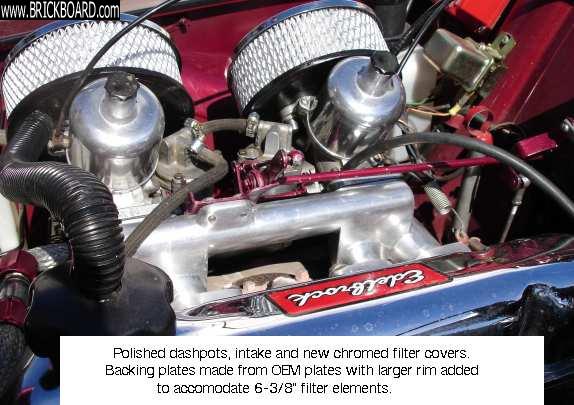|
A couple of comments on previous posts:
I don't know about a 544 fuel guage, but I think our guage actually works the same way as the one in my 1800 (as did my dad's 122, if I'm not mistaken). There's no "comparison of resistances" going on. Rather it's a fiendishly simple but terribly twisted plan that makes the needle move. The needle itself is suspended on a bimetallic strip. Just as you might assume that's a thin strip of two different kinds of metals laminated together. The two metals have different expansion rates, so as the strip is heated, it bends. The metal on the outside of the bend expands faster than the metal on the inside of the bend. There are thermal switches on Volvs that work the same way. As they are heated, the deflection causes them either to make or lose contact with another contact in the switch.
So, the circuit works like this: there guage sender is simply a rheostat attched to a float: the higher the float, the lower the resistance in the circuit. The less resistance, the more current. Inside the guage, that bimetallic strip is wrapped in wire. With the increased current, the wrappings heat up and the strip bends causing the needle to move. So, if there's a short to ground, the needle heads north but quick.
So, the first thing to do is to pull the instrument pod anddisconnect its wiring. Pull out the floor in the back of the car. This is a pain in the butt. Find the plate covering the guage sender and remove it. Pull the connector and probe the grey wire with an ohmmeter, with the other probe connected to good ground. If you get anything but infitite ohms, you've got a short, which would suck badly. If the wire is good, then the guage sender is bad. As indicated, it's a pretty simple circuit, and since the guage itself works, there are few other things to go wrong.
Now, despite my infinite respect for "Sven's Manitainer," I have to qualify his description of the simplicity of the job of replacing the guage sender. I tried recently, and if it hasn't been done before on your car, it might be a pretty bad job. It certainly was on mine, which ended up off to the shop behind a wrecker. If you're going to do it yourself, be prepared with the proper Volvo tool, rather than a wood or brass drift and a hammer. Also, if you don't know the age of your pre-pump, be prepared to replace it, too.
The hole in the floor is not much bigger than it has to be, and although access is definitely easier in a wagon than in a sedan, it's not by much. Also, it's apparently not unusual for the hose connections to snap off while you're trying to remove the hoses. Then, if you do find you can't get the assembly out, you're screwed (this is what happened to me).
At any rate, this is one job I hope I won't have to do again soon.
By the way, if you should suspect the guage to be bad, you can test it by hoking up various resisters from 0-350 ohms between the grey wire connector at the guage sender and ground. Under different resistances, the guage should read different levels, the more resistance, the lower the needle.
Good luck!
-EdM.
--
'90 240DL Wagon 'Lola' -- '72 1800ES 'Galadriel'
|

